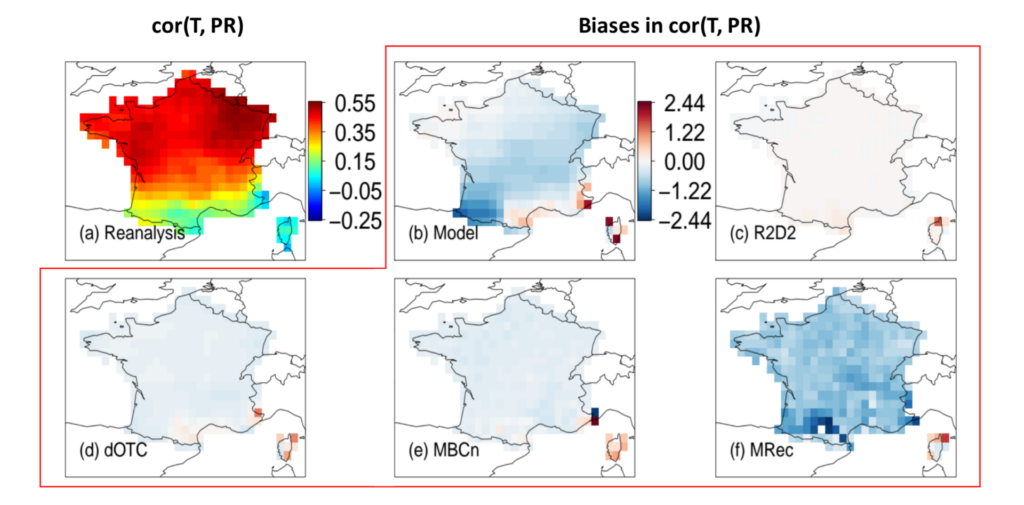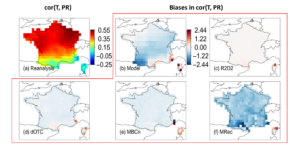Climate models are the major tools to study the climate system and its evolutions in the future. However, climate simulations often present statistical biases: even for the past climate, the statistical attributes of modeled variables (e.g., the mean or spatial correlations) can differ from those calculated based on observations (or reanalysis). Therefore, it is often needed to adjust climate simulations before using it, for instance, for climate change impact studies. Recently, some multivariate bias correction methods have been proposed in the literature to restore inter-variable and spatial correlations of climate simulations. However, these methods present different specificities in terms of applicability and assumptions which are not yet fully apprehended by researchers and practitioners. In this study, we intercompared 4 existing multivariate bias correction methods in order to help practitioners in the choice of methods for their applications [1]. Although the 4 methods showed a great ability to adjust the desired multivariate statistical properties, caution has to be taken before applying theses methods. It has indeed been noted that instability can be observed for some methods when considering a high number of variables to correct. Moreover, none of the multivariate bias correction methods considered in this study are designed to adjust the temporal properties of climate simulations, which leads to obtain corrected data with potential unexpected temporal behaviors. Developing new multivariate bias correction methods that are able to correct, on the one hand, inter-variable and spatial correlations and, on the other hand, temporal properties of climate simulations is an interesting perspective on which the ESTIMR team is actively working.



